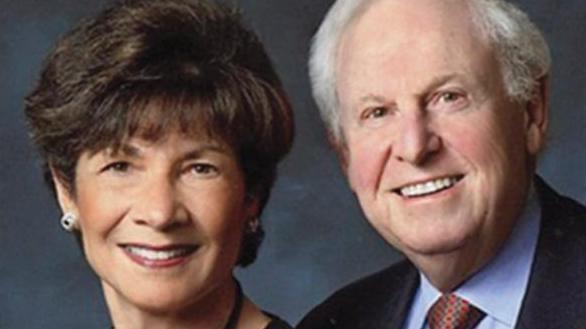Donor Spotlight
Creating Value in Life and Work
As a young design engineer at Johnson & Johnson in the 1960s, Alan Kaganov (MS’71, MPhil’72, ScD’74) set his sights on becoming head of Research & Development (R&D). But it soon became clear to the mechanical engineering graduate (BS’60, Duke University) that rising through the corporate ranks would require further technical training in his chosen field of medical devices and health care. He was drawn to the advantages of Columbia Engineering, including its New York location, even though the School did not yet have a biomedical engineering department.
“In the late ’60s, many engineering programs did not include biomedical engineering,” said Kaganov. “I worked with a few different department heads at Columbia to structure my own program.”
Through a prestigious Career Fellowship from the National Institutes of Health in Biomedical Engineering, Kaganov was able to fund his studies, which culminated in three separate doctoral exams in chemical engineering, mechanical engineering, and anatomy and physiology, in order to meet the requirements for his customized biomedical engineering degree.
The hard work paid off after graduation when Kaganov joined American Cyanamid Lederle/Davis & Geck, a sutures and closures company, and achieved his goal of becoming a research director in less than two years. The experience impressed upon Kaganov the importance of education.
“I recommend at least getting your master’s degree,” he said. “It makes it easier to get a job, and the big companies today—the optimal place to start a career—would be eager to interview Columbia graduate engineers.” He believes big companies provide a foundation in business knowledge, which is the basis of either a corporate career or a role in an entrepreneurial startup.
Kaganov went on to have a varied career focused on developing market-leading technologies at major medical device companies, moving from R&D roles to general management and eventually to CEO of EP Technologies, a medical device manufacturer. The fledgling startup, focused on diagnosis and treatment of cardiac arrhythmias, presented Kaganov with a new challenge: raising money to provide growth capital.
It also put him in contact with the venture capital community across the Bay Area. After the company was acquired by Boston Scientific (BSX), Kaganov joined BSX as vice president of corporate development and strategic planning. This role represented a change for Kaganov, and his acumen in finding new technologies and companies for acquisition led to the next phase of his career as a partner with US Venture Partners (USVP) in Menlo Park, California.
“They were some of the people I had made pitches to,” said Kaganov. “The contacts you make, your network, is very important. My career wasn’t mapped out, but I seized opportunities.”
Now in semiretirement as a senior adviser with USVP, Kaganov has taken a keen interest in supporting bioengineering education. He and his wife, Carol, have decided to establish a professorship at Columbia through their estate plans. “We wanted to create a professorship as part of our legacy,” he remarked.
Kaganov, who served on the Board of Visitors from 2010 to 2016, also wants to help support the positive changes he has witnessed at the School, much of which he credits to the leadership of Dean Mary C. Boyce.
“She has elevated the position of the School within the University, attracted resources to make the School more competitive, and has shown a real commitment to innovation,” he said.
Encouraged by these developments, Kaganov hopes the professorship will contribute to alleviating suffering and solving medical problems that cause society, and individuals, much pain and expense.
For current students interested in translating research to the marketplace, Kaganov stresses the importance of choosing the right projects. They should focus on unmet health care needs of scale that can also create value, while addressing the risks.
“The question to ask is, ‘Can you find a problem that you are passionate about, and can you define that problem?’” said Kaganov. “It has to be something meaningful and value-creating. If it can be successful, you’ll be fulfilled.”

Alan and Carol Kaganov
